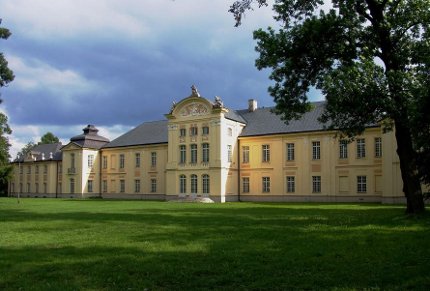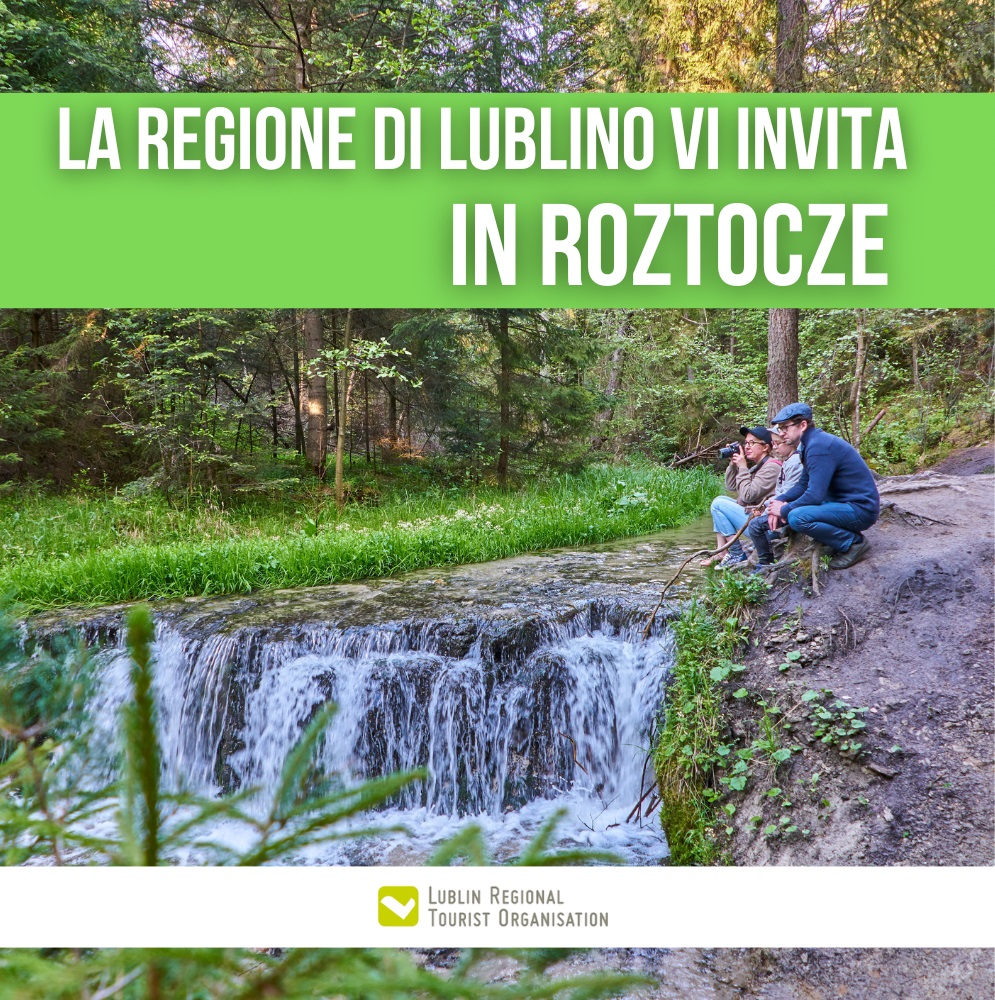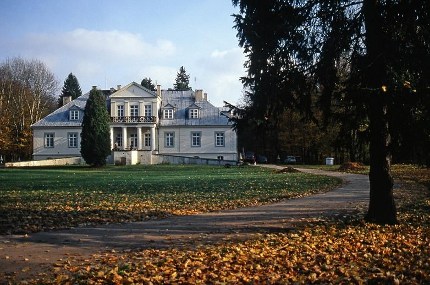Places

A town with the largest palace and park complex in the Lublin Region, founded in the mid-18th c. by Marshal Eustachy Potocki. The scale of the architectural design of the palace, conservatory and the gates displays the highest artistic skill of the Rococo sculptors and architects such as J. Fontana, J. Ch. Redler, J. B. Plersch and J. Lapen. Opposite the palace stands the Parish Church of the Holy Trinity, built in the first half of the 17th c. in the Lublin Renaissance style. There is also an 18th-century bell tower there designed by J. Fontana. The tomb of the Mniszech Family, the founders o ...

Roztocze è una regione geografica straordinaria con eccezionali valori naturali, culturali e storici. In Polonia copre una parte dei voivodati di Lublino e di Precarpazia. È caratterizzata da boschi fitti, edifici radi, silenzio e clima unico nel paese. Le aree forestali più preziose sono state protette nell'ambito del Parco Nazionale di Roztocze, il più boscoso tra i parchi polacchi. La Riserva Transfrontaliera della Biosfera di Roztocze è stata iscritta nella lista d'élite della Rete delle Riserve della Biosfera dell'UNESCO. ...

A village where Józef Ignacy Kraszewski, the most popular 19th-century writer of historical novels, spent most of his childhood. The manor-house was erected by the writer’s grandparents, Anna and Błażej Malski, and turned into a museum in 1962. The neighbouring Romantic park features a brick Neo-Gothic gate and a chapel – a mausoleum of the Kraszewski Family. ...

It is the oldest nature protection area in the Lubelskie Region. It was formally established in 1974 but its origins go back to the 16th c. when Chancellor Jan Zamoyski, owner of the Zamoyski Estate, set up a nature reserve called 'Zwierzyniec.' It was a vast area of woodland populated by deer, boars, wolves, lynxes, wildcats and Tarpan horses. Today the Polish pony – a descendant of the Tarpan which has its refuge here, is the symbol of the Roztocze National Park. ...

A village in Eastern Roztocze boasting natural phenomena – petrified Miocene trees displayed in the Jalinka Reserve and the local museum. Other interesting sights include a 1901 Orthodox church, a 1903 Roman Catholic church and the wooden St. Nicholas’ Chapel by the springs of the Prudnik River. ...

The park covers the picturesque area of the Grabowieckie Divide – one of the most interesting mesoregions in the east of Poland. The landscape features picturesque undulating fields with hills rising up to 311m AMSL. The hills are separated by river valleys of the Wieprz, the Wojsławka and the Wolica. The park features many rare species of steppe and heliophilic plants listed in the Polish Red Book of Plants, e.g. the dwarf cherry (Prunus fruticosa), French rose (Rosa gallica) and the stool iris (Iris aphylla). ...

Sławatycze is a village located among the picturesque meanders of the Bug River. For centuries it was inhabited by a multi-religious community of Catholics, Orthodox, Jews, and Evangelicals. Opposite each other there are two impressive temples - the Orthodox church of the Protection of the Mother of God and the church of Our Lady of the Rosary. On the local market, you can see over three-meter bearded figures known as the brodacze of Sławatycze. According to the long tradition, a parade of men disguised as the brodacze goes through the streets of the village in the last three days of Decembe ...

W Sobianowicach swój bieg kończy rzeczka Ciemięga w wodach Bystrzycy. Piękny krajobraz dolin dwóch rzek oraz otaczających wierzchowin, przenika także pewna historia. Interesującą i tajemniczą zbieżność nazwisk prezentuje lokalny przekaz, który barwnie przytacza postać XV-wiecznego właściciela Sobianowic – Jana Kuropatwę. Istnieje przypuszczenie, że był to ten sam Jan Kuropatwa, który w 1430 roku obrabował skarbiec klasztorny na Jasnej Górze, dokonując jednocześnie profanacji cudownego obrazu Matki Bożej Częstochowskiej. Pobliskie, nadbystrzyckie tereny, osiedlali p ...

A village in the Sobibór Forest with well-preserved historic architecture. A few kilometres north of the village, the Nazis established an extermination camp operating from the spring of 1942 to the autumn of 1943, where 180,000 Jews and 1,000 Poles were killed. Presently it is a museum and a remembrance site. ...

The park stretches over parts of the communes of Włodawa, Hańsk and Wola Uhruska in the Włodawa Poviat. The characteristic features of the park are vast lowlands covered with thick woods, peat-bogs, marshes and little forest lakes. Among interesting plant species there are the downy willow (Salix lapponum), the swamp willow (Salix myrtilloides) and the shrub birch (Betula humilis). The park is a natural habitat and a refuge of a very rare and endangered species - the European pond turtle. ...
Page 12 of 16










